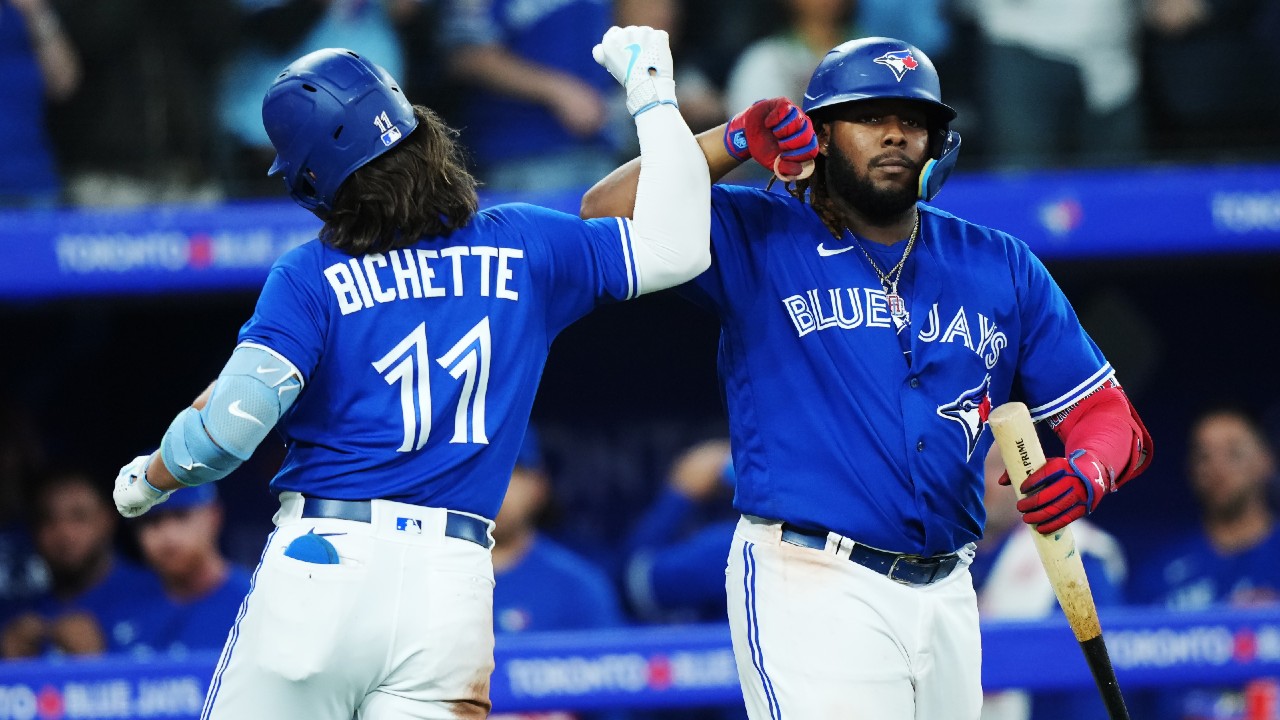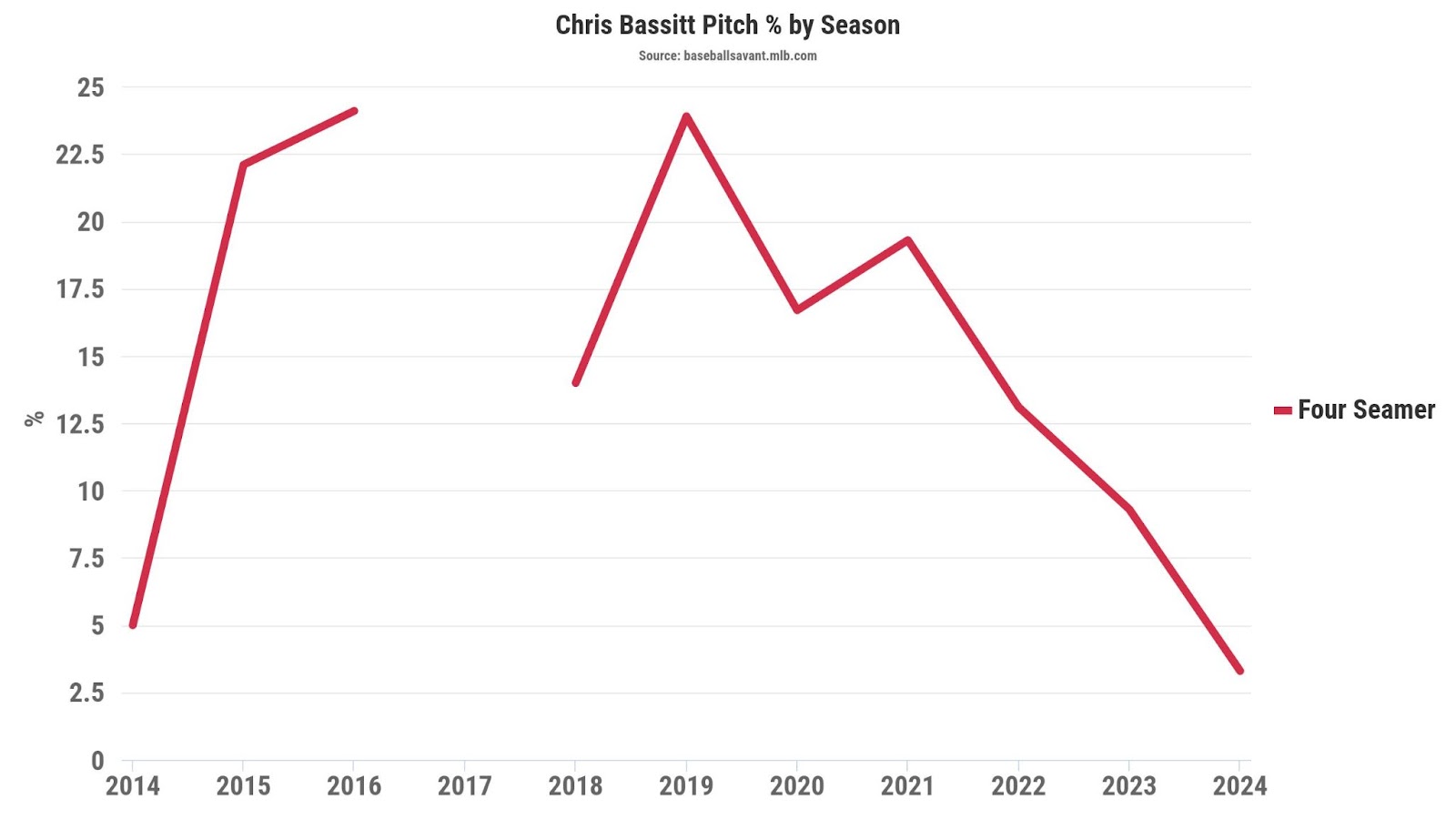Chris Bassitt has quietly changed the pitch mix for the Blue Jays – and it’s working – Sportsnet.ca

July 4, 2024, 9:39 a.m.
TORONTO – Complexity is at the core of Chris Bassitt’s brand.
The 35-year-old Toronto Blue Jays pitcher has a repertoire of eight pitches, with four being more than enough for most starters, many getting by with three, and some – like his rotation colleague Kevin Gausman – getting by with two.
When you have 27th percentile velocity, you have to find creative ways to throw hitters off. For some pitchers who lack velocity, that means unusual arm angles or top-notch breaking pitches. Bassitt gets the job done with a varied arsenal and the confusion that comes with it.
At least that is the general opinion about his success.
There is a lot of truth in this, but it is also a bit misleading. The constant emphasis on the breadth of Bassitt’s offerings implies that he will throw any pitch in any count to confuse his opponents. He may do, but it’s important to remember that half of his throws this season have been used less than six percent of the time. Not all arrows in his quiver are created equal.
This season, he’s simplifying his pitch mix rather than complicating it. In fact, over the course of his time with the Blue Jays, he’s increasingly focused on throwing his three most-used pitches: his sinker, cutter and curveball.
In 2022, those three accounted for 64.7 percent of his pitches. Last year, that percentage rose to 67.2 percent and in 2024, to 75.5 percent. During a recent winning streak in which he posted a 1.47 ERA in eight starts, that percentage is 79.7 percent.
Considering that repertoire diversification is supposed to be Bassitt’s strength, it seems counterintuitive that he wouldn’t focus more on it — but it’s also not reasonable to expect him to have eight different pitches that are all excellent. Looking at Baseball Savant’s pitch ratings for his offerings over the past three years, his evolution to focus more and more on three pitches makes sense:
|
Pitch value of all other pitches |
||
These numbers are totals, not percentages, so it’s not surprising that Bassitt had more positive numbers on the pitches he used most often. But that doesn’t explain why all of his other numbers are deep in the negative.
If you look at all of his throws that aren’t sinkers, cutters and curveballs, you get 14 single-season pitch ratings — five more throws in 2024 and 2023, and four in 2022 before he adopted the splitter. Only one of those 14 was positive (his changeup in 2023) and one was neutral (his sweeper this year). The other 12 were negative.
These numbers help explain the reasons for his pitch mix changes, but they don’t mean Bassitt should abandon his core concept and take a conventional approach. While it’s impossible to quantify the benefit of requiring opponents to prepare and be alert to his many pitches, there’s almost certainly something that won’t show up in the results of each pitch.
Additionally, there are important use cases for many of Bassitt’s lesser-used offerings. His sweeper is probably the best example. While it hasn’t produced stellar numbers from a pitch value perspective, it’s an excellent tool for generating whiffs against right-handed batters.
Over the past two seasons, Bassitt’s sweeper has had a whiff rate well over 40 percent against right-handers – and in 2023, he had more strikeouts (28) with this pitch against right-handers than with any other pitch.
Bassitt’s newest pitch, the splitter, also clearly has its advantages. The off-speed pitch is the right-hander’s most impressive from a movement perspective, as it is significantly above average both vertically (up 11 percent) and horizontally (up 22 percent).
The pitch seems promising, but it’s still developing and has been a problem to master. Still, it’s helpful for Bassitt to have as many options as possible against lefties, and 89.3 percent of his splitter was used when he was at a disadvantage in the platoon. If he continues to improve, that could be helpful for a guy who has allowed lefties to hit .271/.348/.479 against him over the past two years.
Bassitt’s changeup probably doesn’t have the potential of a sweeper or splitter, but it also plays an interesting role in his repertoire. Over the past two seasons, he’s thrown it far more often to right-handers (57.9 percent) than left-handers (42.1 percent), and it seems to function as a pure surprise element.
Not only are hitters not used to seeing changeups from same-handed pitchers, Bassitt also has a velocity zone (around 84 mph) that falls right between his fastballs (91-93 mph) and his breaking balls (70-74 mph).
His other two shots – the slider and the four-seamer – seem to be more relics of his early career than important parts of his current repertoire. In 2015, they made up 44.1 percent of his shots. This year, they’re down to 7.3 percent, as the four-seamer has clearly faded from view over the years.
Considering that the pitch had a minus-9 pitch rating last year and resulted in six home runs even though Bassitt threw it less than 10 percent of the time, the downward trend is understandable.
It’s just not fair to expect every single one of the veteran’s shots to be outstanding. Even if he had eight elite shots, he would be impossible to hit. As it stands, he has three main shots and a number of lesser options that have their uses.
Lately, Bassitt seems to be putting quality over quantity and focusing more on using his best skills. It’s hard to argue that’s working right now. There’s probably a tipping point where he wouldn’t remind hitters enough to be aware of all his other weapons, but the results show he’s not there yet.




